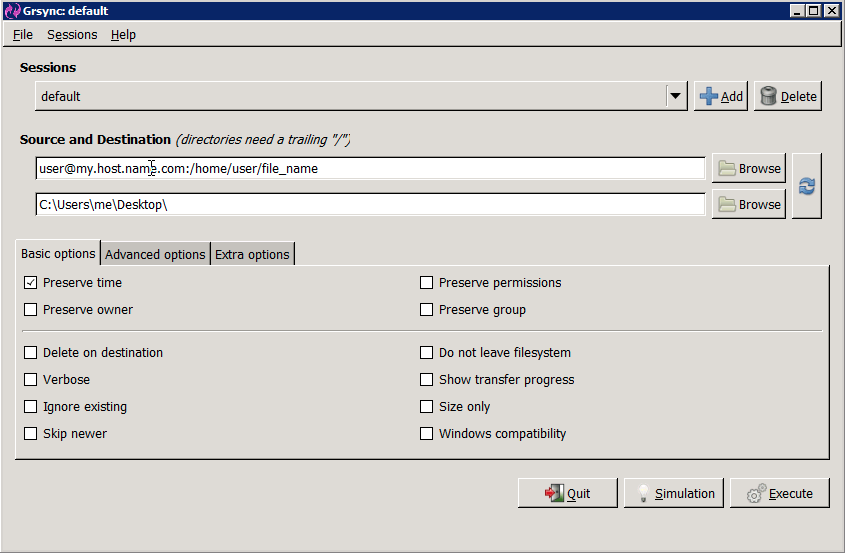

This won’t happen with Acrosync because all its settings fit on a single screen. On the other hand, many GUI backup solutions are so overloaded with features that configuration errors are virtually programmed. Nothing is more annoying than urgently needing a backup only to discover that your backup script contained a little bug. This is important if you want to use the sync tool for backups. This not only saves time when you want to quickly implement a sync solution between a Windows and a Linux machine, but it also has the advantage that configuration errors are less likely because you see all your settings at a glance. Nevertheless, Acrosync’s strength is that it has an easy-to-use GUI. ( Acrosync doesn’t require Cygwin.) As far as I know, PowerShell still lacks a native rsync cmdlet. Cygwin is not really lightweight and you usually need some time to get familiar with it. Join the nixCraft community via RSS Feed, Email Newsletter or follow on Twitter.If you have been looking for ways to run Linux commands on Windows, you probably worked with Cygwin. He wrote more than 7k+ posts and helped numerous readers to master IT topics. Vivek Gite is the founder of nixCraft, the oldest running blog about Linux and open source. For further details use the man command as follows: The main advantage is to make sure that rsync does not eat up the network connection.
#Grsync windows scheduling how to
You learned how to set a rsync command speed limit using various techniques. How to shape or restrict bandwidth under Linux / UNIX / BSD.


You set I/O limit in 1000 KBytes per second: Rsync -bwlimit=KBPS -a -P /path/to/dir/ Examples Rsync -bwlimit=KBPS src -bwlimit=KBPS /path/to/dir How to keep rsync command from using all of my bandwidth Set rsync bandwidth limit to 5000 KBytes per second: rsync -bwlimit=5000 source dest.You can specify the maximum transfer rate for the data sent over the socket or network by typing the -bwlimit=RATE option to the rsync command.Open the Linux, Unix, or macOS terminal.Set rsync speed limit on Linux and Unix-like systems


 0 kommentar(er)
0 kommentar(er)
